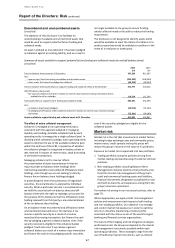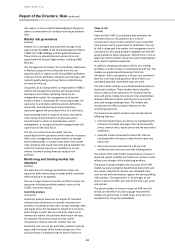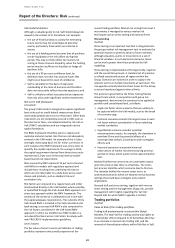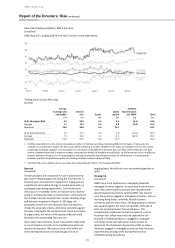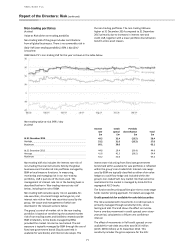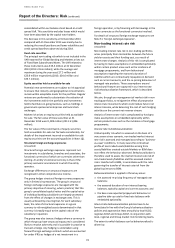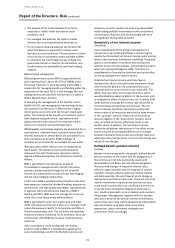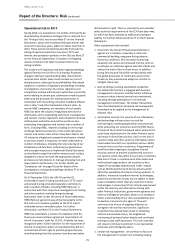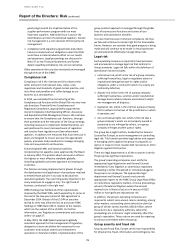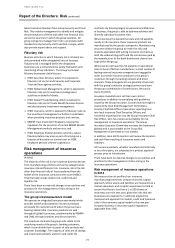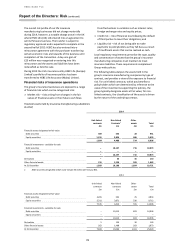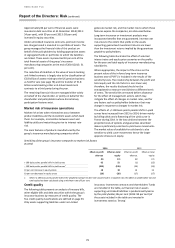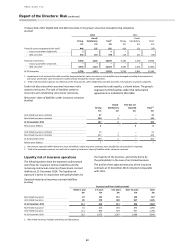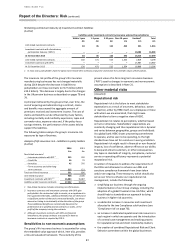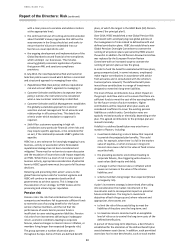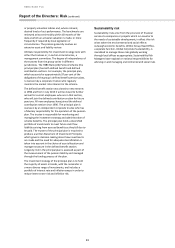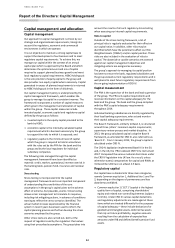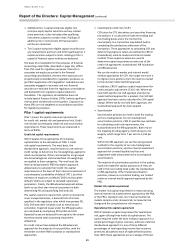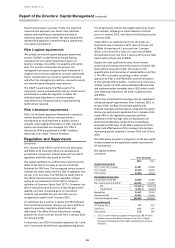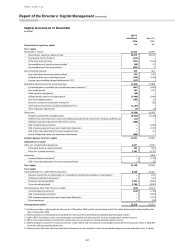HSBC 2014 Annual Report Download - page 79
Download and view the complete annual report
Please find page 79 of the 2014 HSBC annual report below. You can navigate through the pages in the report by either clicking on the pages listed below, or by using the keyword search tool below to find specific information within the annual report.
HSBC BANK PLC
Report of the Directors: Risk (continued)
77
takes functional direction from Group Security and Fraud
Risk. This enables management to identify and mitigate
the permutations of these and other non-financial risks
across the countries in which the group operates. All
group companies manage their risk in accordance with
standards set by Security and Fraud Risk, Europe, which
also provide expert advice and support.
Fiduciary risk
Business activities in which fiduciary risk is inherent are
only permitted within designated lines of business.
Fiduciary risk is managed within the designated
businesses via a comprehensive policy framework and
monitoring of key indicators. The Group’s principal
fiduciary businesses /activities are:
• HSBC Securities Services, where it is exposed to
fiduciary risk via its Funds Services and Corporate
Trust and loan agency activities;
• HSBC Global Asset Management, which is exposed to
fiduciary risks via its investment management
activities on behalf of clients;
• HSBC Global Private Banking, which is exposed to
fiduciary risks via its Private Wealth Services division
and discretionary investment management;
• HSBC Insurance, which is exposed to fiduciary risks via
the investment management activities it undertakes
when providing insurance products and services;
• RBWM Trust Investment Wrappers, required by
regulation for the provision of normal RBWM Wealth
Management products and services; and
• HSBC Employee Pension Scheme activities, where
fiduciary duties may arise as part of carrying out a
function of discretion or control over an HSBC
Employee pension scheme's operations.
Risk management of insurance
operations
(Audited)
The majority of the risk in our insurance business derives
from manufacturing activities and can be categorised as
insurance risk and financial risk. Insurance risk is the risk,
other than financial risk, of loss transferred from the
holder of the insurance contract to the issuer (HSBC).
Financial risks include market risk, credit risk and
liquidity risk.
There have been no material changes to our policies and
practices for the management of risks arising in the
insurance operations.
The group’s bancassurance model
We operate an integrated bancassurance model which
provides wealth and protection insurance products
principally for customers with whom the group has a
banking relationship. Insurance products are sold
through all global businesses, predominantly by RBWM
and CMB, through branches and direct channels.
The insurance contracts the group sells relate to the
underlying needs of the group’s banking customers,
which it can identify from its point-of-sale contacts and
customer knowledge. The majority of sales are of savings
and investment products and term and credit life
contracts. By focusing largely on personal and SME lines
of business, the group is able to optimise volumes and
diversify individual insurance risks.
Where we have the operational scale and risk appetite,
mostly in life insurance, these insurance products are
manufactured by the group’s companies. Manufacturing
insurance allows the group to retain the risks and
rewards associated with writing insurance contracts as
both the underwriting profit and the commission paid by
the manufacturer to the bank distribution channel are
kept within the group.
Where we do not have the risk appetite or operational
scale to be an effective manufacturer, a small number of
leading external insurance companies are engaged in
order to provide insurance products to the group’s
customers through its banking network and direct
channels. These arrangements are generally structured
with the group’s exclusive strategic partners and earn
the group a combination of commissions, fees and a
share of profits.
Insurance manufacturers set their own control
procedures in addition to complying with guidelines
issued by the Group Insurance. Country level oversight is
exercised by local Risk Management Committees.
Country Chief Risk Officers have direct reporting lines
into local Insurance Chief Executive Officers and
functional reporting lines into the Group Insurance Chief
Risk Officer, who has overall accountability for risk
management in insurance operations. The Group
Insurance Executive Committee oversees the framework
globally and is accountable to the Group Risk
Management Committee on risk matters.
In addition, local ALCOs monitor and review the duration
and cash flow matching of insurance assets and
liabilities.
All insurance products, whether manufactured internally
or by a third party, are subjected to a product approval
process prior to introduction.
There have been no material changes to our policies and
practices for the management of risks arising in the
insurance operations.
Risk management of insurance operations
in 2014
We measure the risk profile of our insurance
manufacturing businesses using an economic capital
approach, where assets and liabilities are measured on a
market value basis and a capital requirement is held to
ensure that there is less than a 1 in 200 chance of
insolvency over the next year, given the risks that the
businesses are exposed to. In 2014 we aligned the
measurement approach for market, credit and insurance
risks in the economic capital model to the new pan-
European Solvency II insurance capital regulations
applicable from 2016.


